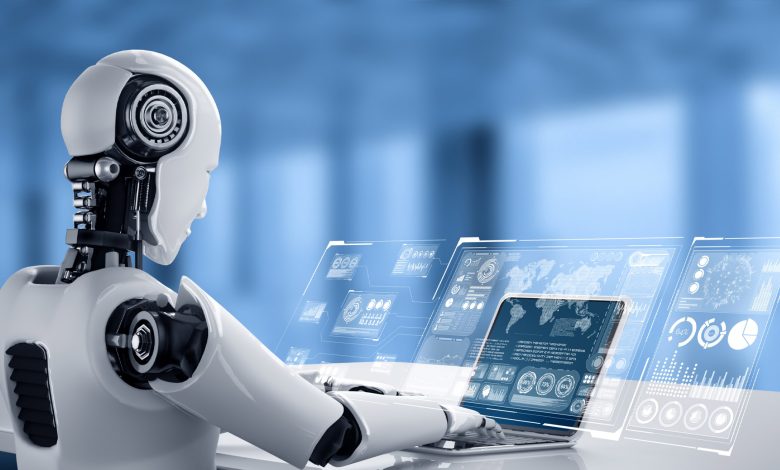The Impact of Automation on Employment: What the Future Holds

Automation is a rapidly advancing technology that has already begun transforming our work. Examining the potential impact on employment is essential as the global workforce continues to be reshaped and automated processes become increasingly commonplace. Automation has the potential to open up a world of new possibilities and opportunities.
Still, it could also significantly impact the way we work and the job market as a whole. As automation continues to evolve, it’s important to consider the future and how best to prepare for it. This article looks at the potential implications of automation for employment and explores what the future may bring for the global workforce.
What is automation, and how has it impacted the workplace?
Automation refers to the use of technology to perform tasks without human intervention. It has been used in various industries to improve efficiency, reduce labor costs, and improve accuracy and precision.
Automation has had a significant impact on the workplace, both in positive and negative ways. On the positive side, automation can increase productivity, reduce errors and costs, and free workers to focus on more complex, higher-value tasks. It can also improve working conditions by reducing the need for physically demanding or dangerous tasks.
On the negative side, automation can lead to job displacement as machines take over tasks previously performed by humans. This can lead to job losses and a need for workers to retrain for new roles. Automation can also create other social and economic issues, such as income inequality and a lack of opportunities for workers without the necessary skills or education to take advantage of new technologies.
Overall, the impact of automation on the workplace depends on how it is implemented and the steps taken to mitigate any negative consequences.
Potential implications of automation for employment
The potential implications of automation for employment are complex and multifaceted. Automation has the potential to increase efficiency and productivity, reduce labor costs, and improve the accuracy and precision of tasks. However, it also has the potential to displace jobs as machines take over tasks that humans previously performed.
The impact of automation on employment will depend on various factors, including specific automated tasks, the prevalence of automation in an industry, and the availability of alternative employment opportunities.
Some workers may be able to adapt to automation by acquiring new skills and training for new roles, while others may be displaced and face difficulties finding new employment. It is important for governments, employers, and workers to consider the potential impacts of automation on employment and to take steps to mitigate any negative consequences. This could include investments in education and training programs to help workers adapt to new technologies and policies to support workers displaced by automation.
How can automation create new opportunities?
Automation can create new opportunities in several ways. By increasing efficiency and productivity, automation can help organizations grow and expand, creating new job openings. Automation can also free up workers from performing routine, repetitive tasks, allowing them to focus on more complex, higher-value work. This can create new job opportunities for workers with the skills and education to take on these more advanced roles.
In addition, automation can create new business opportunities for organizations that develop, sell, or service automated technologies. This can lead to the creation of new jobs in these companies.
Overall, the key to realizing the potential of automation to create new opportunities is to ensure that workers have the skills and education needed to take advantage of these opportunities. This may require investments in education and training programs to help workers adapt to new technologies and prepare for new roles in an automated workplace.
What challenges might automation present?
Automation can present several challenges, both for organizations and workers. Some of the potential challenges of automation include the following:
Job displacement: Automation can lead to job losses as machines take over tasks previously performed by humans. This can be a significant challenge for workers who are displaced by automation and may need to find new employment.
Skills gap: Automation can create a skill gap as the tasks and skills in demand change. Workers may need to acquire new skills to adapt to an automated workplace, and organizations may need to invest in training to help their employees adapt.
Income inequality: Automation can contribute to income inequality as some workers may benefit from increased efficiency and productivity while others may lose their jobs or see their wages stagnate.
Social and economic issues: Automation can create social and economic issues such as unemployment, a lack of opportunities for workers without the necessary skills or education, and a potential widening income gap between skilled and unskilled workers.
Legal and regulatory issues: Automation can raise legal and regulatory issues, such as questions about liability and responsibility in an automated system accident.
Future of automation and employment
The future of automation and employment is difficult to predict, as it will depend on various factors, including technological developments, economic conditions, and public policies.
However, automation will likely continue to play an increasingly important role in the workplace and positively and negatively impact employment. Automation has the potential to increase efficiency, reduce labor costs, and improve the accuracy and precision of tasks. Still, it also has the potential to displace jobs, particularly those that involve routine, repetitive tasks.
To mitigate the negative impacts of automation on employment, it will be important for governments, employers, and workers to invest in education and training programs to help workers adapt to new technologies and prepare for new roles in an automated workplace. Policies to be developed to support workers displaced by automation, such as unemployment insurance, retraining programs, and income support, will also be important.
Ultimately, the future of automation and employment will depend on how society responds to the challenges and opportunities presented by this technology. By taking a proactive and thoughtful approach, it may be possible to harness the benefits of automation while minimizing any negative consequences.


